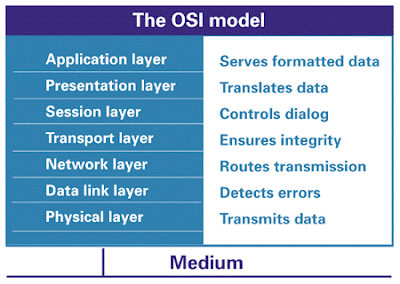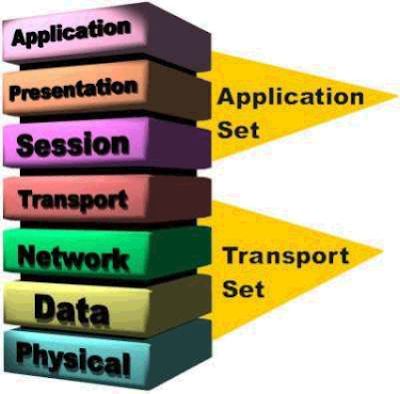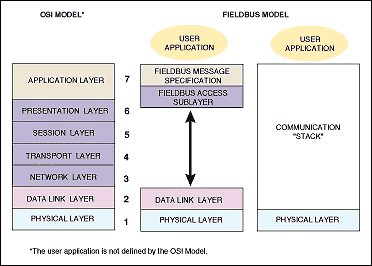This article is about Foundation Fieldbus OSI Model Versus OSI Model and focusing to the engineers, technicians and supervisors.
Foundation Fieldbus OSI Model Versus OSI Model
How Fieldbus Works ?
There are two major parts to the Fieldbus system architecture: interconnection and application. Interconnection refers to the passing of data from one device to another, may it be a field device, operator console or a configurator. This is the communication protocol part of Fieldbus. The application is the automation function the system performs. By standardizing part of the application, Fieldbus has gone further than any other communication standard, ensuring interoperability between conforming products.
Interconnection
It refers to the passing of data from one device to another, may it be a field device, operator console or a configurator.
Application
It is the automation function the system performs.
OSI Model
The OSI reference model is an internationally recognized standard for network architecture on which open networks are based.
The layers are piled on top of each other and are together called the protocol stack. A layer only interfaces with layers immediately above and below in the stack.
OSI Model:
The OSI reference model is an internationally recognized standard for network architecture on which open networks are based. The standard is developed as a model for telecommunications on all levels. All the functions (facilities such as addressing, error checking and encoding/decoding) of a network have been grouped into logical sets called layers, altogether seven.
The layers are piled on top of each other and are together called the protocol stack. A layer only interfaces with layers immediately above and below in the stack. The stack interfaces upwards to the application, and downwards to the transmission media.
The part of the whole application performed by the system that is performed in a device is called the application process (AP). The AP consists of two parts, one user portion, which is the functionality, and one communication portion. In Fieldbus the user portion is the actual device function, such as measurement or control (function blocks), or the user interface.
OSI Reference Model
A set of seven layers that define the different stages that data must go through to travel from one device to another over a network. Now just imagine assembly line of computer. On each layer some functions going to happen and it will prepare for the next coming layer. We have two sets of these 7 following layers.
•Application Set:
•Layer 1: Physical.
•Layer 2: Data.
•Layer 3: Network.
•Layer 4: Transport.
•Layer 5: Session.
•Layer 6: Presentation.
•Transport Set:
•Layer 7: Application.
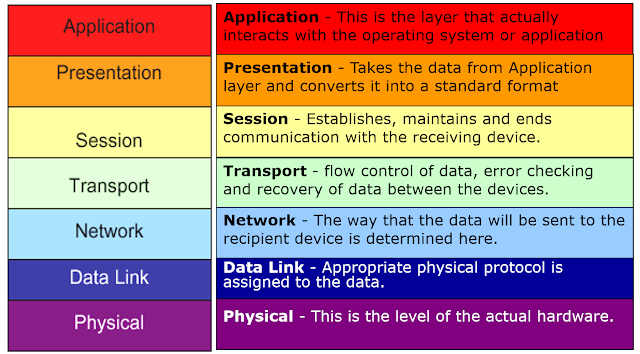
System and Network Management
- Device Tag assignment.
- Station address assignment.
- Clock synchronization.
- Scheduling of distributed APIs.
- Function block binding.
The purpose of network management is to provide services for central configuration and control of the network protocol stack, such as maintenance and start-up of the Fieldbus system. For example, the network management manages the connections. The system management is split into two parts: a kernel which provides the basic functionality that a control application can be built upon, and a part that provides optimization of operation and diagnostics of problems. It coordinates functions in all layers, controls overall device operation and startup. The purpose with system management kernel is to provide functions for:
- Device Tag assignment.
- Station address assignment.
- Clock synchronization.
- Scheduling of distributed APs.
- Function block binding.
In a system, each of the above functions can only be managed by one device (though one device may handle many of them), the others act as agents. In case a manager fails, one of the agents will assume the manager role. For the system management to perform its task, it must cooperate with the system management in other stations on the network. A simple device may implement only a part of the system management functions.
Physical Device Tag assignment
Before a device is put on the network, the user must first assign a physical device tag to the device (i.e. it is done off-line). The tag may be up to 16 characters, typically in accordance with normal instrumentation practices, e.g. PT-10270.
Station address assignment
Automatically assigns and ensures that each device on the network has a unique address. An ‘uninitiated’ device has a default address. Configuration devices detect new devices and will assign a station address, after check for duplicate tags. bringing the device to the ‘standby’ state. A temporary device such as a hand held configurator selects its own address if there is no traffic on the network.
Function block binding
The network automatically finds the device (station address) for a given function block. It checks for multiple tags. This function is used when resolving links between block outputs to inputs (identified by the block’s tag, and the parameter name) to the short address and index reference.
Clock synchronization
For the Fieldbus system to perform scheduling and other time related functions such as time stamping of alarms and events, there is a distributed time base (clock) in each device, providing a common sense of time among all devices — ‘system time.’ System management provides a mechanism for synchronization of the time in each device. This is done from a ‘master clock’ which provides the correct time.
Scheduling
The purpose of scheduling is to minimize delays due to communication. Such delays are pure dead time which make control difficult. Scheduling also insures that variables are sampled and function blocks are executed on a precisely period basis, so that the delay is constant. A constant delay is a must, since a change in delay would require re-tuning. This way, tight closed loop control is achieved with time left over for background traffic. Scheduling also insures accurate trending and predictable alarm detection. There are three scheduled functions:
- Background Traffic.
- Operational Traffic.
- Function Block Execution.
The synchronization is based on system time. A macro cycle is a period of block execution which is divided into an integer number of phases – clock units.
All function blocks are executed, and all operational traffic is passed during the macro cycle (see fig below). The Function Block Execution starts the execution of the function blocks at the beginning of a phase by informing the FBAP at the proper time. Note that transducer blocks are not scheduled to enable special sensing techniques or measurement when a sample is available. The user may determine in what order the blocks should be executed in order to minimize delays due to parameter propagation. Background Traffic is scheduled to be passed during the phases not used for Function Block Execution or Operational Traffic.
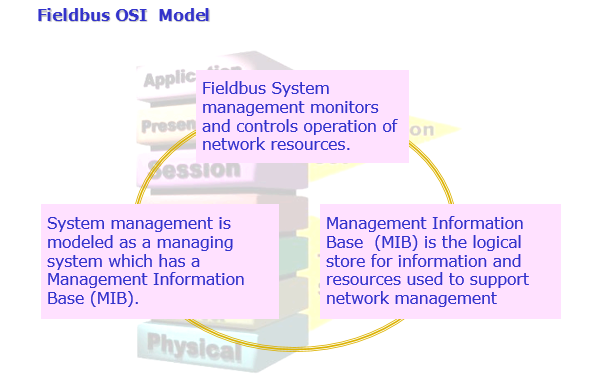
Foundation Fieldbus Network Management.
The OSI network management is an extension to the OSI layers, reaching over all the layers. System management monitors and controls operation of network resources. It is divided into system management functional areas. For Fieldbus, the most important functional area is network configuration. System management is accessed from one station to another.
It is modeled as a managing system (playing the manager role), a managed system ) that plays the agent role), which has a Management Information Base (MIB). MIB is the logical store for information and resources used to support network management. The end-user is primarily concerned with the physical connection and the application. The physical layer, as previously mentioned, is already standardized and will not change. It will surely expand to include other media such as radio, but it will not change.
Since all suggested Fieldbus protocols propose almost identical solutions for the user application, the Fieldbus is ‘ready’ as far as the user is concerned. Users may now go ahead and learn the installation, application and operation aspects of Fieldbus without being afraid of having wasted their time. The uncertainty lies in the application and data link layers, and in the management functions. However, those are transparent to users, and only of concern to product developers.
In the Fieldbus communication , Network , Transport, Session and Presentation layers are not used. The Physical Layer is OSI layer 1. The Data Link Layer is OSI layer 2. The Fieldbus Message Specification (FMS) is OSI layer 7.
Foundation Fieldbus OSI Model
In the Fieldbus communication , Network , Transport, Session and Presentation layers are not used because Fieldbus, (and most other LANs) has no interconnection between networks, which is the purpose of these layers. This simplification makes Fieldbus faster and easier to implement in devices with limited processor power, such as field instruments. The three remaining layers, and provided functional and procedural characteristics are:
1. Physical Layer (PhL); media independent activation, maintenance, and deactivation of physical links that transparently pass the bit stream for communication; it only recognizes individual bits, not characters or multicharacter frames. The standard defines types of media and signals, transmission speed and topology including number of nodes, and device power (only in Fieldbus).
2. Data Link Layer (DLL); transfers data between network entities; activation, maintenance and deactivation of data link connections, grouping of bits into characters and message frames, character and frame synchronization, error control, media access control and flow control (allowing several devices to share the network). The standard defines type of media access control, frame formats, error checking and station addressing*.
7. Application Layer (APP); gives access to a set of local and communication services for serving the distributed system — interconnection between the APs and the user. Standard defines message formats and services available to the AP.
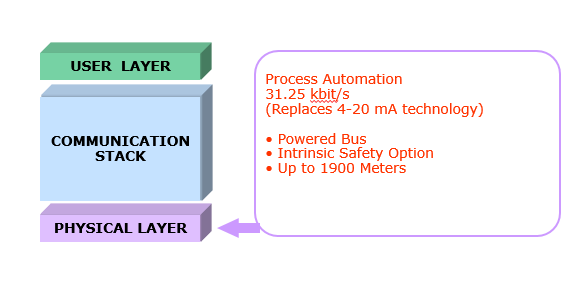

- Provides Standard Function Blocks. Consistent definition of data for integrated and seamless distribution of functions in field devices from different suppliers.
- Provides Time Critical Scheduling of function blocks.
- Provides Device Descriptions which allows the host system to operate the device without custom programming.
Please read also: Fieldbus Cable and Segment Check Procedure
You will find lot of documents related to this article. Just navigate our website www.paktechpoint.com and find more articles.
